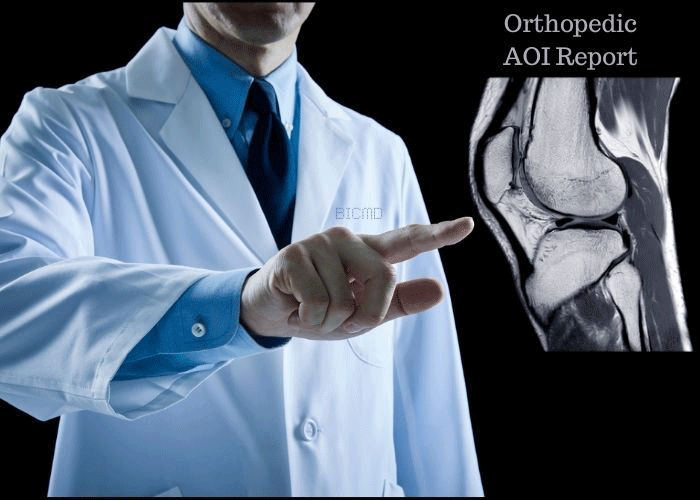Why should Age of Injury Reports be Standard for Orthopedic Claims?
If you are a stakeholder in an orthopedic claim, age of injury reports should be standard operating procedure. By mandating age of injury (AOI) reports for orthopedic claims, you can enhance transparency, fairness and efficiency. A standard AOI report can help guide proper medical treatment, accurately determine liability and ultimately benefit both claimant and insurer. Best In Class MD (BICMD) offers advancements in equipment and training that allow for accurate injury dating, making the claims process easier and more transparent.
What is an Age of Injury Report for Orthopedic injuries?
An Age of Injury Report (AOI) done by Best In Class MD (BICMD) is an advanced medical assessment where we give you the timeframe in which the injury occurred. This report is done by expert assessment of patient history, clinical evaluation and radiological imaging such as X-rays, CT scans or an MRI. WE can accurately determine if the injury is acute, subacute or chronic.
How does an Age of Injury Report from BICMD save money in the orthopedic claims process?
The Age of Injury Reports from BICMD have been proven to cut orthopedic claims costs, improve efficiency and ensures that money is only spent on valid orthopedic claims. We do this by helping the claim stakeholders understand:
- If the injury is pre-existing or current as reported
- If the claim should be disputed or processed
- Accuracy of medical imaging, testing and reporting
- Proper treatment for the reported injury
- An accurate timeline for return-to-work duties or if work needs to be modified
What can I expect from a BICMD Age of Injury report in an orthopedic workers’ compensation case?
Our expert and unbiased AOI report is done by board-certified experts in orthopedics and sports medicine. Our Best In Class MDs complete the following:
- Medical Imaging Analysis: Assessing the characteristics of the reported injury
- Stage(s) of bone healing for fractures
- Soft tissue changes in ligaments, tendons or muscle injuries
- Presence of swelling, bruising, inflammation or scar tissue
- Clinical Findings: We can examine symptoms, range of motion, past and present tenderness and correlate the findings with the estimated time of injury.
- Patient History Review: We look for pre-existing conditions that may have attributed to the current or new injury.
- Classification of Injury:
- Acute: Injury is 0 – 2 weeks old. These types of injuries show fresh fractures with inflammation and active swelling.
- Subacute: Injury is 2-6 weeks old. This type of injury will show partial healing, reduced swelling and some tissue repair.
- Chronic: Injury is 6 weeks or older. These injuries show scar tissue, previous healed breaks, complete signs of healing and degenerative changes.
Why do you need an AOI for an orthopedic claim?
Age of Injury reports in orthopedic claims helps, primarily, in preventing fraud in insurance and legal claims. We can help determine if the injury is current, which helps claims adjusters calculate proper compensation. A well-done AOI Report can also help guide proper treatment and give employers a timeline for when the injured party can return-to-work.
Why should you use BICMD for an Age of Injury Report in an orthopedic claim?
Quite simply, we’re the best choice for an unbiased, accurate AOI Report. Our Best in Class MD network is exactly that: the top 1% of board-certified medical specialists in the field. Our experts have a proven track record for accurate AOI reports and are up-to-date on the latest legal, medical and claims-related reporting requirements. We will save the claims stockholders time and money by avoiding unnecessary and sometimes lengthy treatment. We expediate claims closer and support better claims management decisions. Contact BICMD for your AOI report today!



